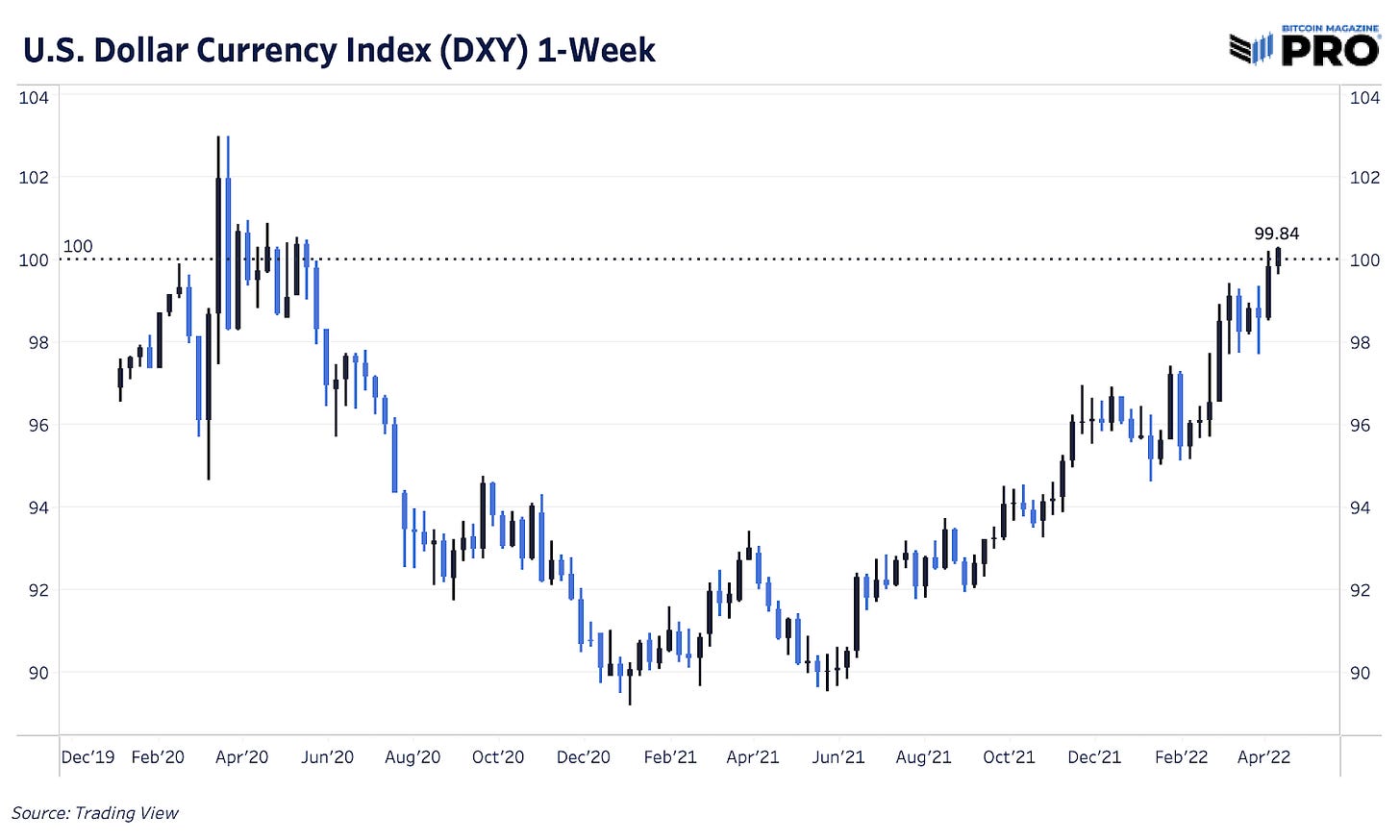BM Pro Daily - Consumer Price Index Hits 8.5%
Inflation Versus 10-Year Treasury Yields
Today, we received the United States Bureau of Labor Statistics inflation data for the month of March, which came in at a red hot 8.56% year-over-year (marginally above the 8.4% consensus). As what seems to be in direct response to higher inflation and negative real yields, treasury markets continue to sell off with the 10-year rising to over 2.7%, up from 1.5% at the start of the year.
Together, the increasing inflation rate and the 10-year treasury yields create what we think is the most important macroeconomic chart right now. We continue to see a period of financial repression play out as inflation is magnitudes above bond yields, which produces guaranteed losses for investors who rely on these risk-free rates.
Even if we were to see CPI peak this month or in the coming months, we still expect an elevated level of inflation for all of 2022 and into 2023, well above the 2% inflation target and above the 10-year treasury yield.
On a month-over-month basis, total CPI reached its highest acceleration since 2005. Core CPI, which removes energy and food and is more closely watched by the Federal Reserve and markets, shows a month-over-month deceleration indicating that some inflation components could be turning over. With Core CPI coming in at 0.32% month-over-month, below the consensus of 0.5%, the bond market saw a small rally.
Ultimately, the cure to higher prices is higher prices. Eventually persistent inflation overwhelms consumers and their wallets which can lead to a much stronger deflationary impact playing out.
Overall, the higher inflation data will likely keep the Fed on its hawkish course as it catches up to the rising rates in markets. With a current target federal funds rate of 25-50 bps, the market is pricing in an 83.79% chance of a 50-bps rate hike at the May 4 meeting.
The U.S. dollar has strengthened significantly against other fiat currencies over the past year, as shown by the DXY. What is happening today is that the dollar is depreciating against real goods and services, while appreciating against other fiat currencies, which presents problems for international and emerging economies that carry lots of dollar-denominated debt.
A strengthening dollar in a world where the USD is the world’s reserve currency means that a U.S. recession is a global recession, as the further the dollar rises the more insolvent the global economy becomes.
This is one of the key reasons why the Fed will eventually have to reverse course on their current path of tightening. You can think of the debt-based monetary system as a game of musical chairs. When the music is playing, everyone is dancing and happy that their nominal wealth is increasing in value, as the economy collectively takes on more and more leverage. When the music slows or even stops, a rush ensues to grab a chair to sit down (acquire dollars to cover dollar-denominated liabilities). This is the mechanics of a short squeeze on the dollar, otherwise known as a deleveraging, where foreign and domestic actors alike sell assets to cover liabilities.
The only catch to this style of musical chairs is that everyone loses if more chairs aren’t introduced into the game after a short period. The very nature of the music slowing down means that chairs begin to disappear in an increasingly rapid and chaotic manner: debt defaults destroy money, exacerbating the credit contraction and selloff in asset markets.
If this game seems quite chaotic and volatile, it’s because it is. This is a rough analogy to the fiat monetary system we find ourselves living in today.
Actionable Info
While this is not a research product that gives explicit trading signals, we do frequently present our data-driven outlook across timeframes. Over the coming quarters, the chances of a recession in the U.S. as well as other areas of the globe look increasingly likely.
The following statement is not investment advice.
Because of this likely reality, the best approach for bitcoin investors/traders/savers currently is to simply apply a dollar-cost averaging approach to your bitcoin strategy for now. There will likely be a time where it makes sense to use a strategic amount of your bitcoin position to borrow dollars and increase your position size. Over-collateralization, entry point and position-sizing specifics aside, that point does not look to be today. Realized volatility in the legacy system could pick up meaningfully as we proceed throughout 2022, and for that reason, leverage and active trading of positions in the bitcoin market is likely not a positive expected value for most market participants.
Bitcoin as collateral is an extremely powerful tool when used correctly. The most challenging thing is waiting for the most opportune moments. We believe that moment is ahead of us.
While our outlook on the bitcoin market remains cautious over the short/intermediate term due to the tightening financial conditions that are second-order effects of rising consumer inflation, the long-term conditions are unchanged and stronger than ever.
The world is in dire need of neutral, apolitical, programmatic money. The negative real-yield environment the economic system finds itself in today is an inescapable reality that comes in the late stages of a long-term debt cycle. Financial repression (negative real yields) is a way to (attempt to) erode the real value of the debts, at creditors’ (bond holders’) expense.
This is among the biggest reasons for our persistent uber-bullishness on bitcoin. The total addressable market for something like bitcoin (of which bitcoin is the only viable option because of node decentralization, immutability, hard-capped supply, immaculate conception and proof-of-work mining) is above $100 trillion ($100,000,000,000,000).
The reality that many critics and skeptics still proclaim it to be “worthless,” or equate it just to “digital gold,” shows just how large the current opportunity is.










Your information has greatly helped me stack sats via trading BTC-USD, thank you.